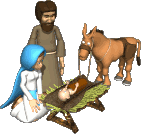


The Culture of Christmas

"Now it is Christmas again" (1907) by Carl Larsson.
Many fictional Christmas stories capture the spirit of Christmas in a modern-day fairy tale, often with heart-touching stories of a Christmas miracle. Several have become part of the Christmas tradition in their countries of origin.
Among the most popular are Tchaikovsky's ballet The Nutcracker and Charles Dickens's novel A Christmas Carol. The Nutcracker tells of a nutcracker that comes to life in a young German girl's dream. Charles Dickens' A Christmas Carol is the tale of curmudgeonly miser Ebenezer Scrooge. Scrooge rejects compassion, philanthropy, and Christmas until he is visited by the ghosts of Christmas Past, Present and Future, who show him the consequences of his ways.
Some Scandinavian Christmas stories are less cheery than Dickens's. In H. C. Andersen's The Little Match Girl, a destitute little slum girl walks barefoot through snow-covered streets on Christmas Eve, trying in vain to sell her matches, and peeking in at the celebrations in the homes of the more fortunate. She dares not go home because her father is drunk. Unlike the principals of Anglophone Christmas lore, she meets a tragic end.
In 1881, the Swedish magazine Ny Illustrerad Tidning published Viktor Rydberg's poem Tomten featuring the first painting by Jenny Nyström of the traditional Swedish mythical character tomte, which she turned into the friendly white-bearded figure and associated with Christmas.
Unlike many films, which date rapidly, Christmas movies are the reliable annuals of the movie business .Many Christmas stories have been popularized as movies and TV specials. Since the 1980s, many video editions are sold and resold every year during the holiday season. A notable example is the film It's a Wonderful Life, which turns the theme of A Christmas Carol on its head. Its hero, George Bailey, is a businessman who sacrificed his dreams to help his community. On Christmas Eve, a guardian angel finds him in despair and prevents him from committing suicide by magically showing him how much he meant to the world around him. Perhaps the most famous animated production is A Charlie Brown Christmas wherein Charlie Brown tries to address his feelings of dissatisfaction with the holidays by trying to find a deeper meaning in them. The humorous A Christmas Story (1983) has become a holiday classic.
A few true stories have also become enduring Christmas tales themselves. The story behind the Christmas carol Silent Night and the story Yes, Virginia, there is a Santa Claus is among the most well-known of these.
Radio and television programs aggressively pursue entertainment and ratings through their cultivation of Christmas themes. Radio stations broadcast Christmas carols and Christmas songs, including classical music such as the Hallelujah chorus from Handel's Messiah. Among other classical pieces inspired by Christmas are the Nutcracker Suite, adapted from Tchaikovsky's ballet score, and Johann Sebastian Bach's Christmas Oratorio (BWV 248). Television networks add Christmas themes to their standard programming, run traditional holiday movies, and produce a variety of Christmas specials.
NEXT: The Timing of Gifts

|
|
|
|
|
|
|
|

|
|
|